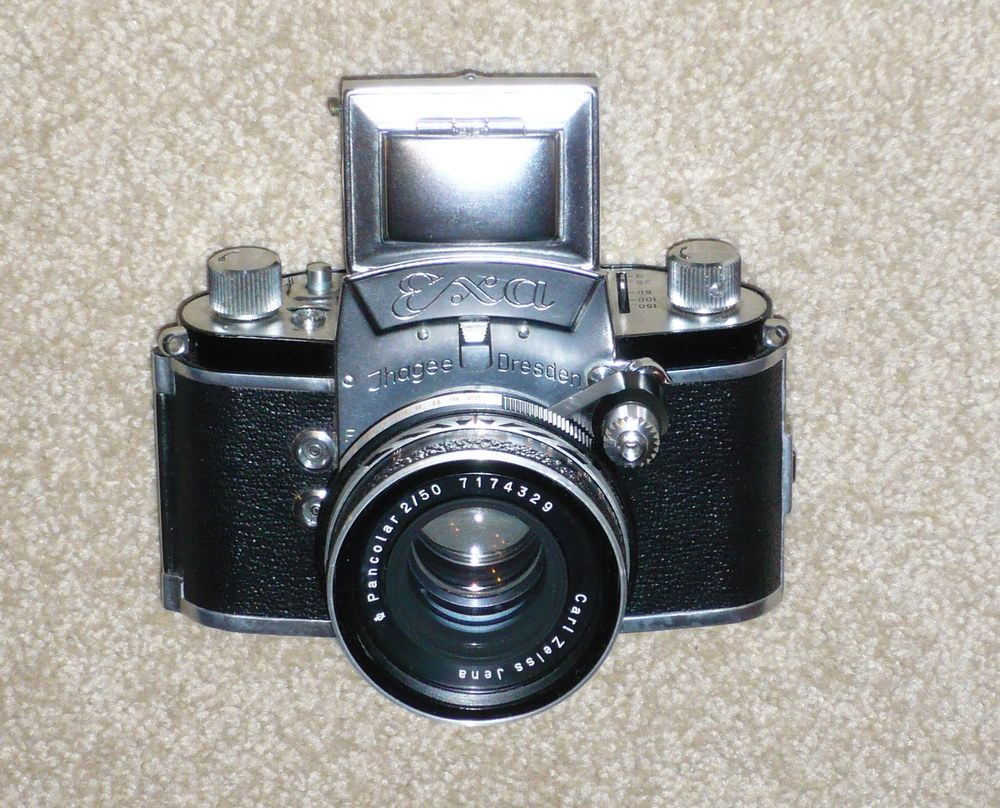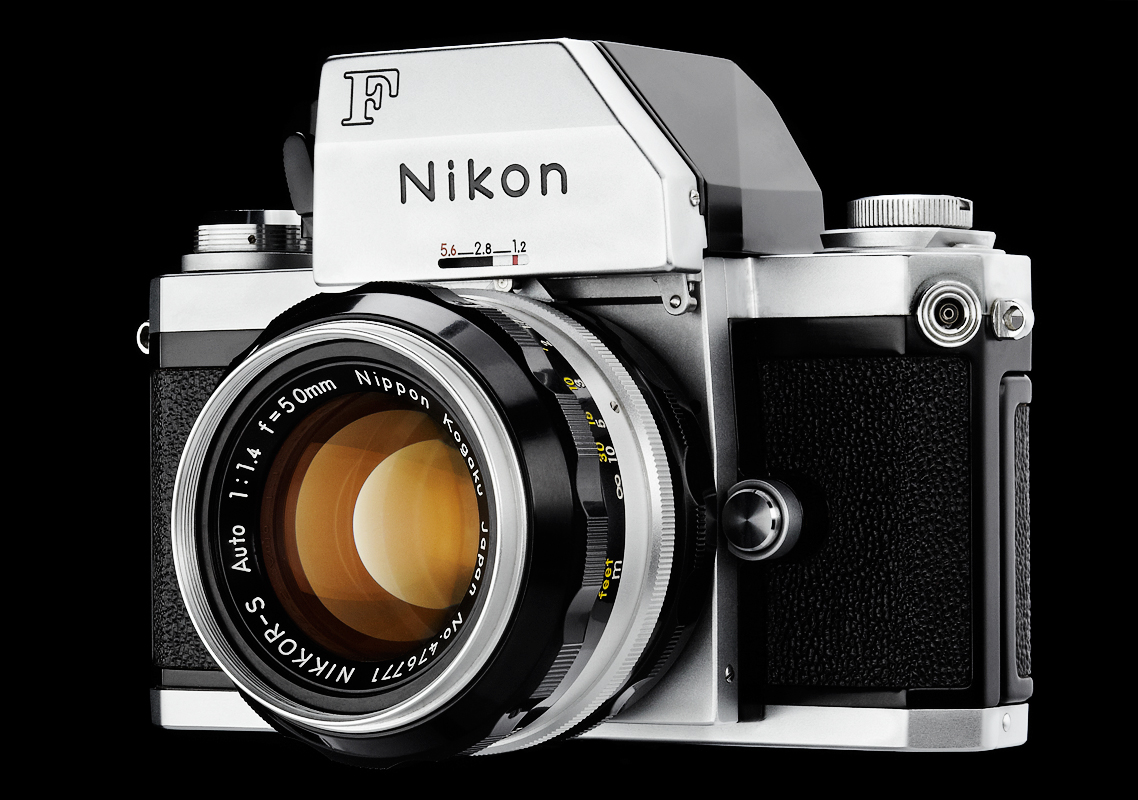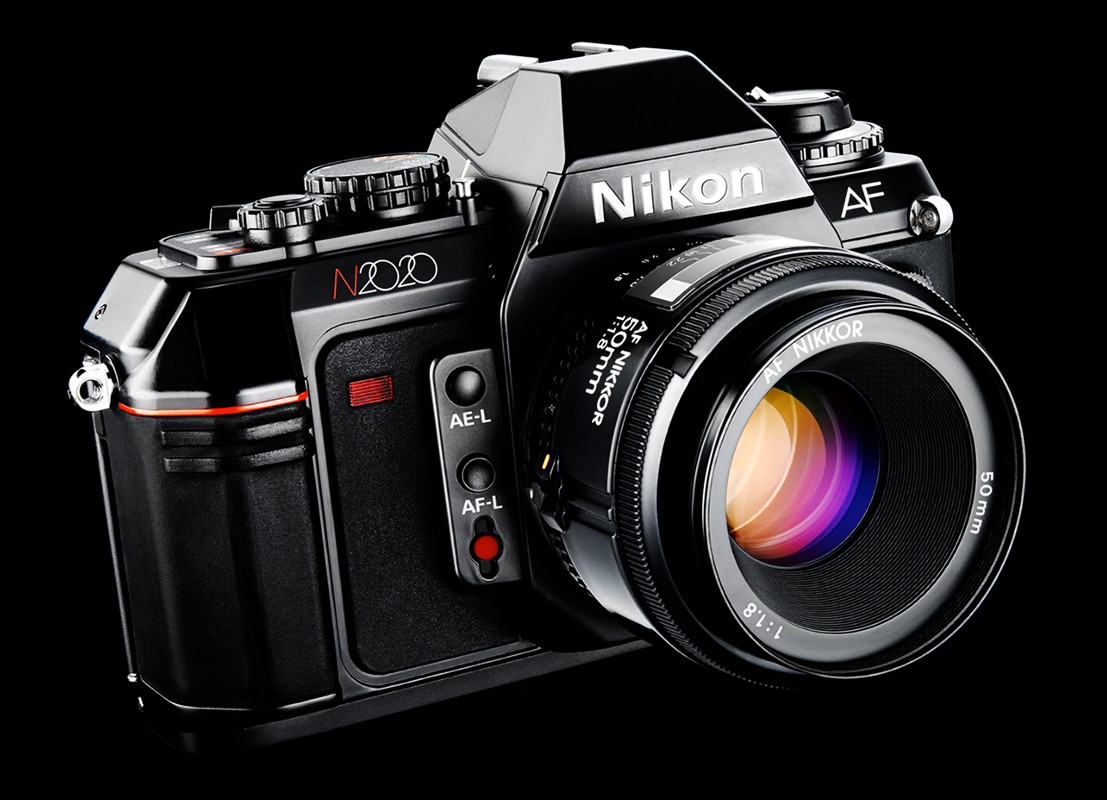|
Nikon N2000
The Nikon F-301 (sold in the United States as the N2000) is a manual focus, autoexposure, auto film loading and advancing 35mm format, 35 mm single-lens reflex camera, SLR camera that was sold by the Nikon Corporation beginning in 1985. It was the replacement for the Nikon FG, FG. The F-301 was identical to the Nikon F501, Nikon F-501 (sold in North America as the N2020) in almost every way, except it lacked autofocus. The Nikon F-301 is notable for being the first Nikon SLR sold that lacked a film advance lever. As a result the selector knob, also used to lock the shutter button, has a continuous option in addition to the single shot. It was also the first Nikon SLR to feature DX film decoding. A standard hotshoe flash mount sits above the viewfinder, with which a flash may be attached to the camera. The Nikon F-301 does not feature a built-in pop-up flash (the Nikon F401, F-401 was the first Nikon SLR to have this feature). It was also the first Nikon to use polycarbonates in ... [...More Info...] [...Related Items...] OR: [Wikipedia] [Google] [Baidu] |
Nikon F-301 0769
(, ; ), also known just as Nikon, is a Japanese multinational corporation headquartered in Tokyo, Japan, specializing in optics and imaging products. The companies held by Nikon form the Nikon Group. Nikon's products include cameras, camera lenses, binoculars, microscopes, ophthalmic lenses, measurement instruments, rifle scopes, spotting scopes, and the steppers used in the photolithography steps of semiconductor fabrication, of which it is the world's second largest manufacturer. The company is the eighth-largest chip equipment maker as reported in 2017. Also, it has diversified into new areas like 3D printing and regenerative medicine to compensate for the shrinking digital camera market. Among Nikon's many notable product lines are Nikkor imaging lenses (for F-mount cameras, large format photography, photographic enlargers, and other applications), the Nikon F-series of 35 mm film SLR cameras, the Nikon D-series of digital SLR cameras, the Nikon Z-series of digital mirro ... [...More Info...] [...Related Items...] OR: [Wikipedia] [Google] [Baidu] |
Manual Focus
In the field of photography, a manual focus camera is one in which the user has to adjust the focus of the lens by hand. Before the advent of autofocus, all cameras had manually adjusted focusing; thus, the term is a retronym. The focus itself may be adjusted in a variety of ways. Larger view cameras and the like slide the lens closer or further from the film plane on rails; on smaller cameras, a focus ring on the lens is often rotated to move the lens elements by means of a helical screw. Other systems include levers on the lens or on the camera body. There are a number of ways in which focus may be determined. Simplest is using a distance scale and measuring or estimating distance to the subject. Other methods include the rangefinder, which uses triangulation to determine the distance. On other cameras, the photographer examines the focus directly by means of a focusing screen. On the view camera, this ground glass is placed where the film will ultimately go, and is repl ... [...More Info...] [...Related Items...] OR: [Wikipedia] [Google] [Baidu] |
Autoexposure
In photography, exposure is the amount of light per unit Unit may refer to: Arts and entertainment * UNIT, a fictional military organization in the science fiction television series ''Doctor Who'' * Unit of action, a discrete piece of action (or beat) in a theatrical presentation Music * ''Unit'' (alb ... area (the image plane's illuminance times the exposure time) reaching a frame of photographic film or the surface of an electronic image sensor, as determined by shutter speed, lens F-number, and scene luminance. Exposure is measured in lux seconds, and can be computed from exposure value (EV) and scene luminance in a specified region. An "exposure" is a single shutter cycle. For example, a long-exposure photography, long exposure refers to a single, long shutter cycle to gather enough dim light, whereas a multiple exposure involves a series of shutter cycles, effectively layering a series of photographs in one image. The accumulated ''photometric exposure'' (''H''v) is t ... [...More Info...] [...Related Items...] OR: [Wikipedia] [Google] [Baidu] |
35mm Format
135 film, more popularly referred to as 35 mm film or 35 mm, is a format of photographic film used for still photography. It is a film with a film gauge of loaded into a standardized type of magazine – also referred to as a cassette or cartridge – for use in 135 film cameras. The engineering standard for this film is controlled by ISO 1007 titled '135-size film and magazine'. The term 135 was introduced by Kodak in 1934 as a designation for 35 mm film specifically for still photography, perforated with Kodak Standard perforations. It quickly grew in popularity, surpassing 120 film by the late 1960s to become the most popular photographic film size. Despite competition from formats such as 828, 126, 110, and APS, it remains the most popular film size today. The size of the 135 film frame with its aspect ratio of 1:1.50 has been adopted by many high-end digital single-lens reflex and digital mirrorless cameras, commonly referred to as " full frame". Even ... [...More Info...] [...Related Items...] OR: [Wikipedia] [Google] [Baidu] |
Single-lens Reflex Camera
A single-lens reflex camera (SLR) is a camera that typically uses a mirror and prism system (hence "reflex" from the mirror's reflection) that permits the photographer to view through the lens and see exactly what will be captured. With twin lens reflex and rangefinder cameras, the viewed image could be significantly different from the final image. When the shutter button is pressed on most SLRs, the mirror flips out of the light path, allowing light to pass through to the light receptor and the image to be captured. History File:Hasselblad 1600F.jpg, Medium format SLR by Hasselblad (Model 1600F), Sweden File:Zenza BRONICA S2 with ZENZANON 100mm F2.8.JPG, Medium format SLR by Bronica (Model S2), Japan. Bronica's later model—the Bronica EC—was the first medium format SLR camera to use an electrically operated focal-plane shutter File:Asahiflex600.jpg, The 1952 (Pentax) Asahiflex, Japan's first single-lens reflex camera. File:Contaflex BW 2.JPG, The Contaflex III a single- ... [...More Info...] [...Related Items...] OR: [Wikipedia] [Google] [Baidu] |
Camera
A camera is an Optics, optical instrument that can capture an image. Most cameras can capture 2D images, with some more advanced models being able to capture 3D images. At a basic level, most cameras consist of sealed boxes (the camera body), with a small hole (the aperture) that allows light to pass through in order to capture an image on a light-sensitive surface (usually a Image sensor, digital sensor or photographic film). Cameras have various mechanisms to control how the light falls onto the light-sensitive surface. Lenses focus the light entering the camera, and the aperture can be narrowed or widened. A Shutter (photography), shutter mechanism determines the amount of time the photosensitive surface is exposed to the light. The still image camera is the main instrument in the art of photography. Captured images may be reproduced later as part of the process of photography, digital imaging, or photographic printing. Similar artistic fields in the moving-image camera dom ... [...More Info...] [...Related Items...] OR: [Wikipedia] [Google] [Baidu] |
Nikon Corporation
(, ; ), also known just as Nikon, is a Japanese multinational corporation headquartered in Tokyo, Japan, specializing in optics and imaging products. The companies held by Nikon form the Nikon Group. Nikon's products include cameras, camera lenses, binoculars, microscopes, ophthalmic lenses, measurement instruments, rifle scopes, spotting scopes, and the steppers used in the photolithography steps of semiconductor fabrication, of which it is the world's second largest manufacturer. The company is the eighth-largest chip equipment maker as reported in 2017. Also, it has diversified into new areas like 3D printing and regenerative medicine to compensate for the shrinking digital camera market. Among Nikon's many notable product lines are Nikkor imaging lenses (for F-mount cameras, large format photography, photographic enlargers, and other applications), the Nikon F-series of 35 mm film SLR cameras, the Nikon D-series of digital SLR cameras, the Nikon Z-series of digital ... [...More Info...] [...Related Items...] OR: [Wikipedia] [Google] [Baidu] |
Nikon FG
The Nikon FG is an interchangeable lens, 35 mm film, single-lens reflex (SLR) camera. It was manufactured by Nippon Kogaku K. K. (Nikon Corporation since 1988) in Japan from 1982 to 1986. The FG was the successor to the Nikon EM camera of 1979 and the predecessor of the Nikon FG-20 of 1984. These three cameras composed Nikon's first family of ultra compact 35mm SLR camera bodies. Although the FG had a much less advanced shutter than the more expensive Nikons of the day, it had a very sophisticated electronic design compared to earlier electromechanical Nikons. Features * First Nikon SLR with programmed auto-exposure (AE). * First Nikon SLR with TTL (through the lens) flash exposure control from a standard ISO-type hot shoe. * Electronically controlled focal plane shutter. * Exposure compensation dial (−2 EV to +2 EV). * Audio warning system – advises of under or over exposure. * Back-up mechanical M90 shutter setting enables use of the camera when batteries are d ... [...More Info...] [...Related Items...] OR: [Wikipedia] [Google] [Baidu] |
Nikon F501
The Nikon F-501 (sold in North America as the N2020) was the first successful autofocus SLR camera sold by the Nikon Corporation beginning in 1986. A nearly identical, albeit manual focus version, called the Nikon F-301 (N2000 in North America) was also available. Subsequent models in the consumer line included the Nikon F-401, Nikon F-601, and Nikon F-801 / F-801s. Features The F-501 is a 35 mm single-lens reflex camera with automatic film loading and advance, almost a first for Nikon (the F-301 was their first SLR to feature this). The built-in motor drive provides single (one exposure and frame advance per shutter button press) or continuous (shutter will fire and film will advance so long as the shutter button is depressed) modes. Maximum film advance speed is 2.5 frames per second (frame/s) on continuous mode, but can be as slow as 1.4 frames/s depending on the status of the focus/exposure locks. Rewind is accomplished manually by a familiar rewind knob which doubled ... [...More Info...] [...Related Items...] OR: [Wikipedia] [Google] [Baidu] |
Autofocus
An autofocus (or AF) optical system uses a sensor, a control system and a motor to focus on an automatically or manually selected point or area. An electronic rangefinder has a display instead of the motor; the adjustment of the optical system has to be done manually until indication. Autofocus methods are distinguished as active, passive or hybrid types. Autofocus systems rely on one or more sensors to determine correct focus. Some AF systems rely on a single sensor, while others use an array of sensors. Most modern SLR cameras use through-the-lens optical sensors, with a separate sensor array providing light metering, although the latter can be programmed to prioritize its metering to the same area as one or more of the AF sensors. Through-the-lens optical autofocusing is usually speedier and more precise than manual focus with an ordinary viewfinder, although more precise manual focus can be achieved with special accessories such as focusing magnifiers. Autofocus accuracy ... [...More Info...] [...Related Items...] OR: [Wikipedia] [Google] [Baidu] |
Nikon F401
The Nikon F-401 (N4004 in North America) was a beginner's level, autofocus, 35mm, single-lens reflex (SLR) film camera built by Nikon and introduced in 1987. The camera represented one of Nikon's first endeavours into consumer-based autofocus, as a follow-up to their first autofocus SLR in 1986, the Nikon F-501 (known as the N2020 in North America). The camera lacked many of the advanced features that more seasoned amateurs and professionals required, but it was a harbinger of the future as it included a pronounced, built-in grip as well as an integrated TTL Flash that is now commonplace on all but the most high-end SLR cameras. The F-401 introduced the now common-place feature of using a thumbwheel instead of lens aperture ring to adjust the aperture. Furthermore, the camera's lack of support for AI lenses meant that while all previous Nikon lenses could be mounted to the camera, none supported automatic exposure TTL metering. By the 1990s, the F-401 was part of a lineup o ... [...More Info...] [...Related Items...] OR: [Wikipedia] [Google] [Baidu] |
Polycarbonate
Polycarbonates (PC) are a group of thermoplastic polymers containing carbonate groups in their chemical structures. Polycarbonates used in engineering are strong, tough materials, and some grades are optically transparent. They are easily worked, molded, and thermoformed. Because of these properties, polycarbonates find many applications. Polycarbonates do not have a unique resin identification code (RIC) and are identified as "Other", 7 on the RIC list. Products made from polycarbonate can contain the precursor monomer bisphenol A (BPA). Structure Carbonate esters have planar OC(OC)2 cores, which confers rigidity. The unique O=C bond is short (1.173 Å in the depicted example), while the C-O bonds are more ether-like (the bond distances of 1.326 Å for the example depicted). Polycarbonates received their name because they are polymers containing carbonate groups (−O−(C=O)−O−). A balance of useful features, including temperature resistance, impact resistance and o ... [...More Info...] [...Related Items...] OR: [Wikipedia] [Google] [Baidu] |







.jpg)
